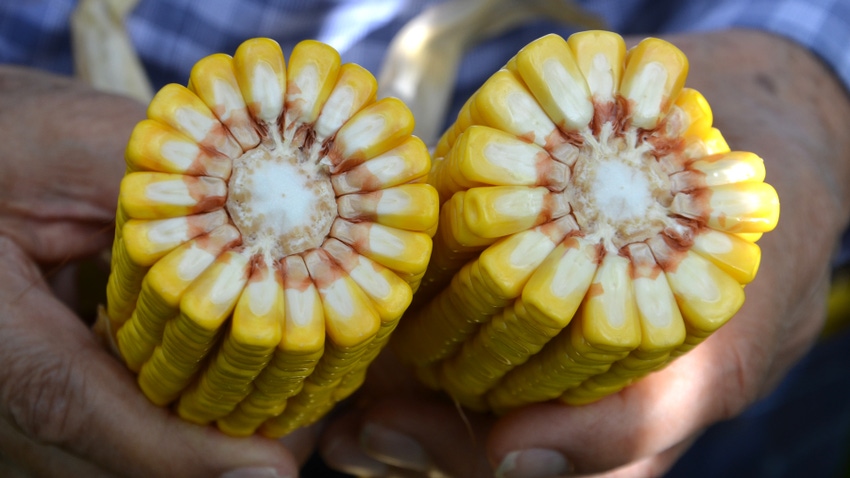March 7, 2023

by Dan Quinn
Corn yield is complex. “How can I get 300-bushel-per-acre corn?” If I had a dollar for every time I was asked that, I probably wouldn’t be in this position today.
The first step to understanding what components make up yield is to realize that individual components are developed throughout the entire growing season. From the moment seed is planted until physiological maturity, yield is gained or lost. In its simplest form, corn yield boils down to total number of kernels and total weight of those kernels produced per unit area. To optimize yield per acre, manage and learn how to optimize number and size of kernels produced per unit area throughout the entire growing season.
Here are the four key components to yield:
1. Number of yield-producing plants. Final harvest population depends upon seeding rate at planting. Germination, emergence and stand establishment success of young corn plants is directly related to the final harvest population, which also helps determine the number of harvestable ears and total kernels produced per acre. Therefore, not choosing the correct seeding rate, planting in poor conditions and not choosing the correct seeding depth can immediately start the corn plant off on the wrong foot.
2. Ear size determination. This boils down to potential kernel row number and potential kernel number per row produced. Row number per ear is more influenced by hybrid genetics and less influenced by stress; it develops in a short window, around V6 to V8. Ear length and potential kernel number per row develops between V6 and V14. This is more likely influenced by stress. Therefore, any stress during those stages can directly impact yield by reducing kernel row number in severe cases, and ear length and potential kernels per row.
3. Final kernel number per ear. This happens during early reproductive stages, from R1 to R3. If stress is observed here, yield will be lost. Even consecutive cloudy days during this period can reduce yield. Stress can throw off the synchrony of silk emergence and pollen drop, causing poor pollination and missing kernels. Even if pollination is successful, kernel abortion can occur up until R3, leaving shrunken and shriveled kernels at the tip.
4. Kernel weight. This is primarily determined during grain fill, from R3 to R6. Even at R5, 30 days prior to black layer, 40% of kernel weight is still to be made. Stress from nutrient deficiencies, disease or frost can limit duration of grain fill and lower final kernel weight, lowering yield.
Overall, it is important to understand that yield isn’t developed at one single time. It’s created by a collection of components developed throughout the entire season. Your goal should be managing the crop to maintain yield potential and eliminate yield-limiting factors. Therefore, managing corn throughout the entire season and optimizing both kernel number and kernel weight is important.
Understanding each yield component can help you identify where yield may have been lost, determine what stress may have caused the loss, and help you better understand how yield can be improved in the future.
Quinn is a Purdue Extension corn specialist. Email him at [email protected].
You May Also Like




